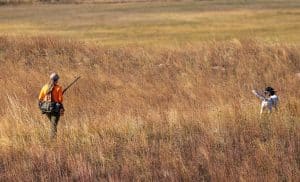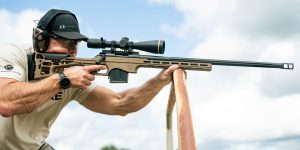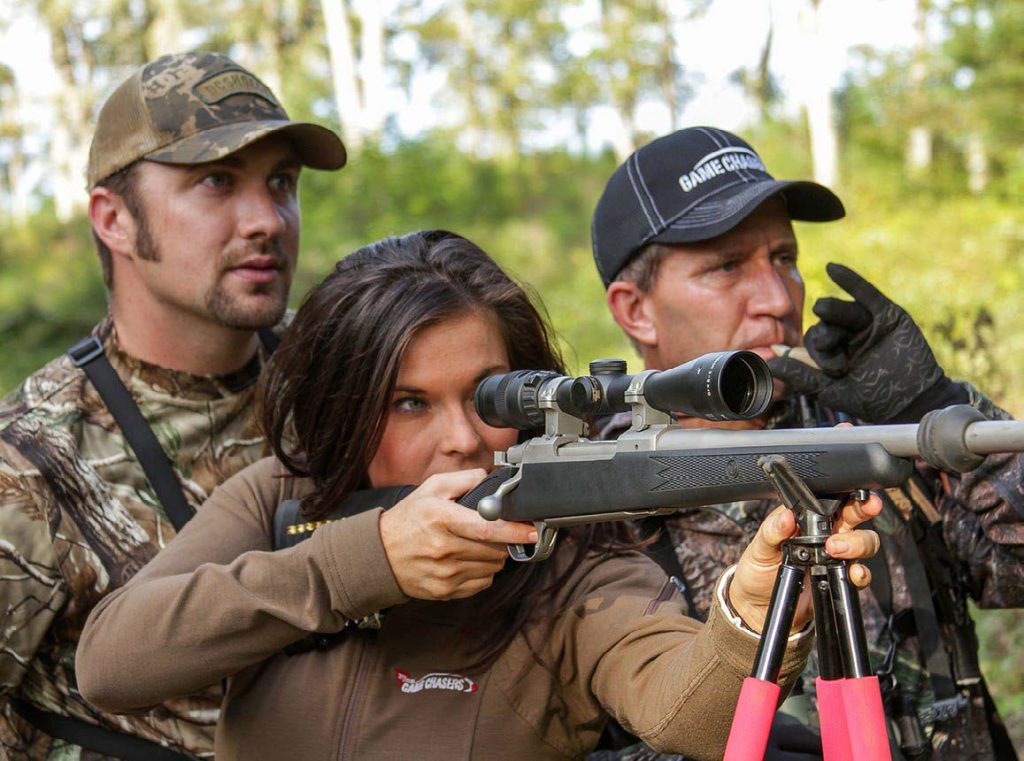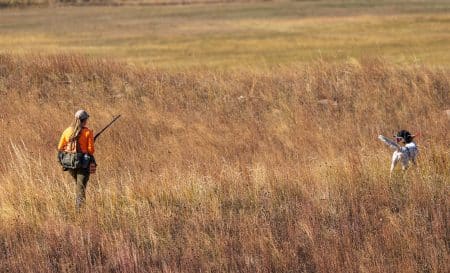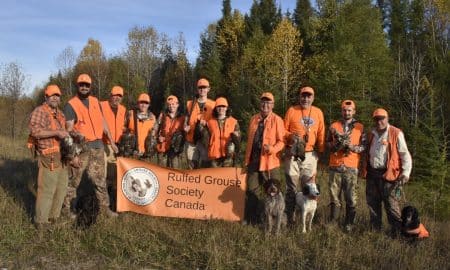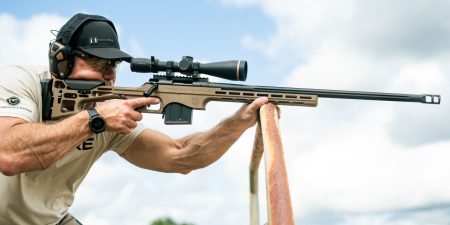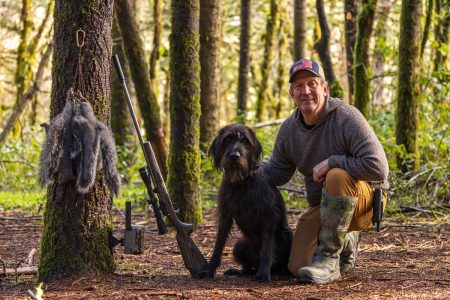We were sitting on an old skid road with a mature stand of Douglas fir trees towering from the ridge behind us, waiting for daylight. No matter how hard we tried, cutting through thick fog with binoculars was impossible in the low light. We knew that in front of us was a big meadow, and we could hear cows and calves calling out there. The elk were there; we just couldn’t see them.
That’s when longtime hunting partner and guide Jody Smith whispered to me, “Let’s move up a couple hundred yards and see if we can find something in the timber. Those elk are going to move into the timber sooner or later, maybe we can head ‘em off.”
An early morning dew made for quiet going, but we knew conditions would not stay that way for long. Temperatures were forecast to top 100ºF on this early August day. If the fog didn’t lift, we would not be able to see the elk until they were in dense timber.
After nearly an hour, the fog began to lift. Unfortunately, the elk had already moved into thick cover and had balled up in a herd to bed down for the day. “With this swirling wind, I’d hate to push ‘em out of here,” said Jody. “Let’s let them be and come back in the morning.” It was the right choice.
My wife, Tiffany, was frustrated, but she understood the situation. Plus, we had time. This was her first Roosevelt elk hunt, and what a tag she held! It was the first year Oregon had opened the special Roosevelt season, and only 10 tags were awarded. The controlled hunt opened in August and lasted five months.
Day two began just like the first: foggy. This time it was even thicker. We all agreed it would be best to leave the elk alone rather than risk spooking them off the property.
The next morning, we woke to a star-filled sky. We immediately headed to the elk grounds. As soon as the land became visible, light-colored bodies could be seen scattered throughout the meadow: Elk!
The meadow was bordered by the Umpqua River on the south and a brush-choked swamp and timbered mountains to the north. We were in the Coast Range, some of the most densely forested, steep mountains in the Pacific Northwest. The moisture from the river keeps the meadow at the base of the mountains green all summer. That attracts elk.
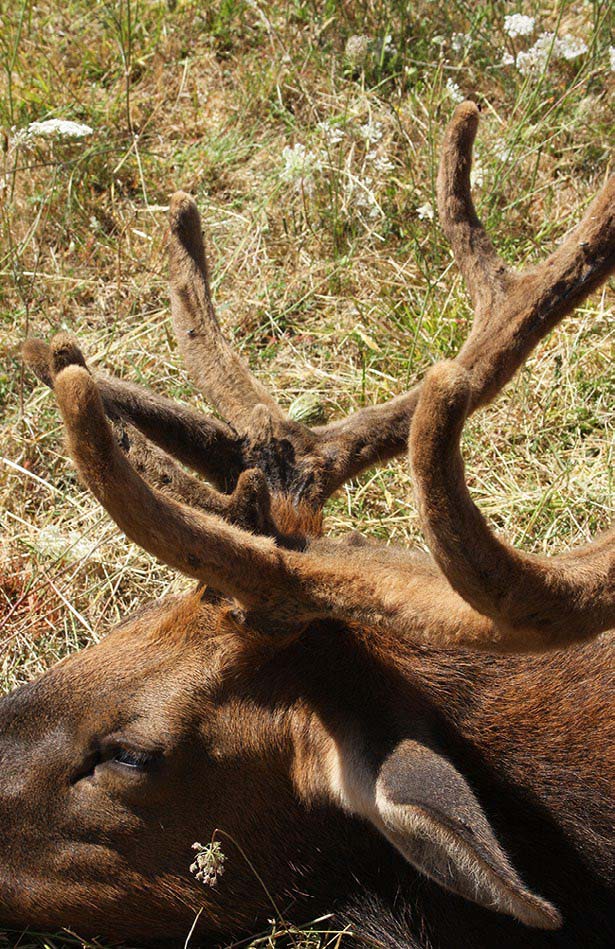
That Big Bull
Glassing several bulls, we saw one that was pushing the coveted 300-inch mark, which is massive for a Roosevelt elk. But the big bull was in a bad spot. He was over 600 yards away and there were more than 40 cows, calves and smaller bulls between us. There was no way of getting close. “I don’t care which bull I shoot, I just want some meat for the freezer,” insisted Tiffany, who is a noted author of wild-game cookbooks. That made things easier.
Soon, we were slipping along a brushy, grass-lined fence. We got to within 100 yards of elk, but only spikes and cows were in shooting range. After several minutes, a 5×5 separated from some cows. Crawling on our hands and knees, we finally got into position. Right when Tiffany got set in the shooting sticks, a cow we hadn’t seen busted us. Just like that, a slam-dunk hunt went awry. The entire herd ran to the middle of the field and gathered in a tight wad. We headed back into the timber and waited for things to calm down.
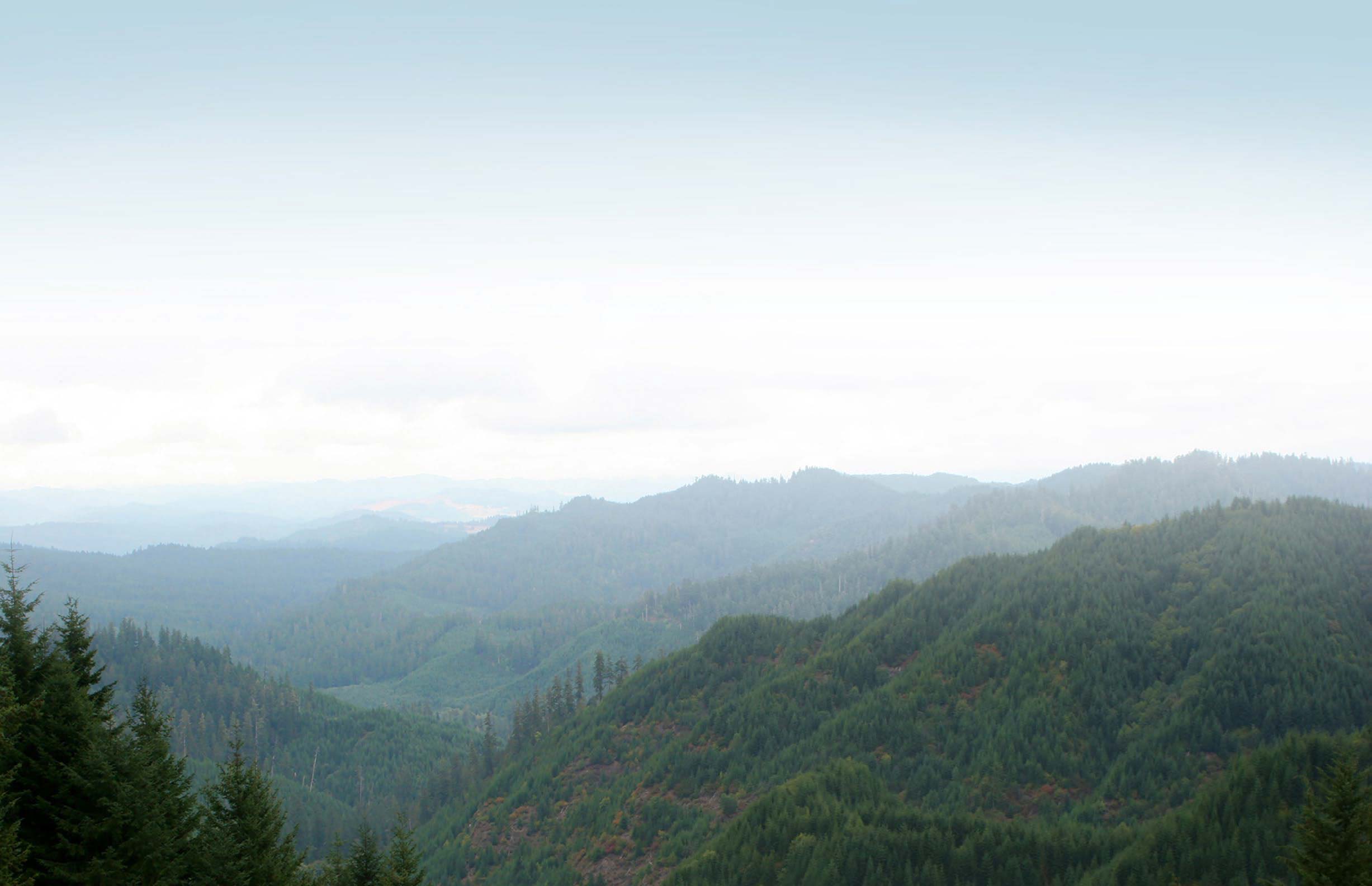
A Good Move
“Let’s move to the end of the field, that’s where they’re going to cross to get into the timber,” Smith recommended. An hour later we were in position. Not long after that, there came the elk. First were the cows and calves, followed by the five-pointer. As soon as it emerged from behind a mass of tall blackberries, a cow called to stop it. Tiffany was in the sticks, and when the bull stopped, her .300 Winchester magnum roared. She got a perfectly placed shot tight behind the shoulder, and soon the bull was down.
Running our hands over the velvet-covered antlers, we were struck by their unique beauty. There are very few hunts in Roosevelt elk country where bulls can be taken in velvet. Tiffany could not have been happier! It was the best-eating bull elk we’d ever had (before or since).
The land where Tiffany got her bull was owned by Gary Williamson. Gary’s wife, Emily, had a landowner tag for their property. The following month, I joined them on Emily’s hunt for a Roosevelt bull.
We were in the same area where Tiffany had taken her bull. With the peak of the rut in full swing, more bulls came out of the Coast Range. They were hoping to get the opportunity to breed the many cows that had swarmed to the area.
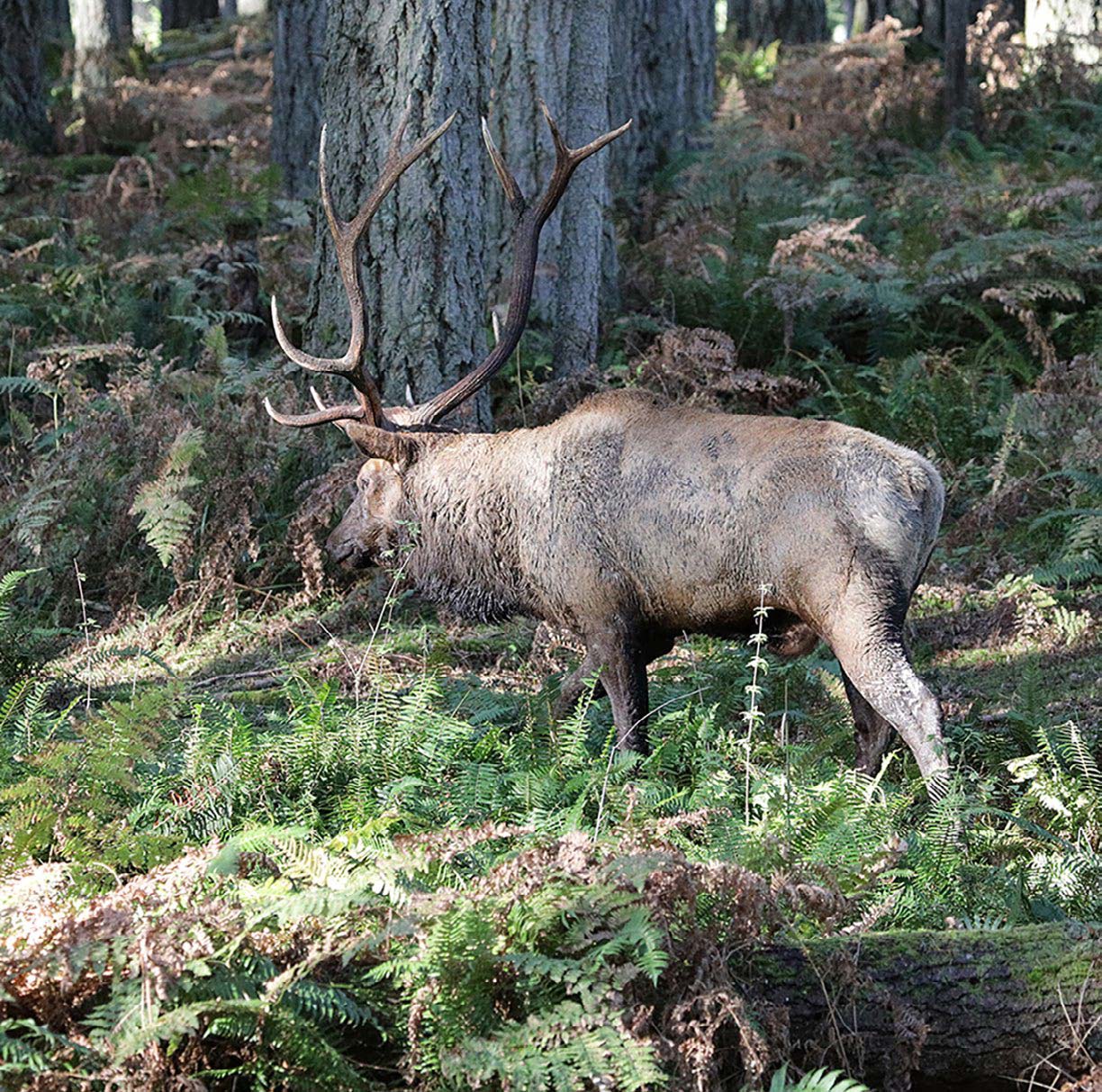
That Bugling!
As daylight came, the echoes of bugling bulls filled the valley. We knew this was a special morning because bugling is something Roosevelt hunters rarely get to experience. It’s something that’s usually much more reserved for their Rocky Mountain cousins.
Watching elk fight, bugle and circle their little harems, we counted six shooter bulls. There were close to 100 cows. We headed to the far end of the property where we could hear a raspy, deep bugle emanating from the trees. As we got near, we could see the bull frantically trying to manage its harem. The bull got them in a tight group and pushed them into a dense wall of brush in a swamp. We had no choice but to wait. If the elk bedded in the thick, cool, foliage, they could spend the entire day there and not be seen. Then again, it was mid-September, and the rut was at its peak. A quick check of the wind confirmed we were good. We waited.
Minutes slowly passed, then movement caught our eyes 50 yards in front of us. Twenty yards behind the first wiggling branch, another limb was pulled down, then another. The elk had spread out and were feeding. It was thick and there was a good chance that the shot could come inside 20 yards if the herd continued moving our way on the trail leading from the swamp.
We dared not call, for we had cows and calves within 30 yards of us. Emily was solidly in the tripod shooting sticks. We could see over a dozen head of elk spread out in front of us, but no bull. “It’s just a matter of time,” Gary whispered. “Be ready, it could happen fast.”
It’s not easy sitting for extended periods, but Emily held her composure well. She was relaxed but excited, and eager but not nervous. She’d taken Roosevelt elk before and knew that it often comes down to a game of patience. As we took in the strong rutting odors of elk, glancing at wallows and fresh rubs, all felt right.
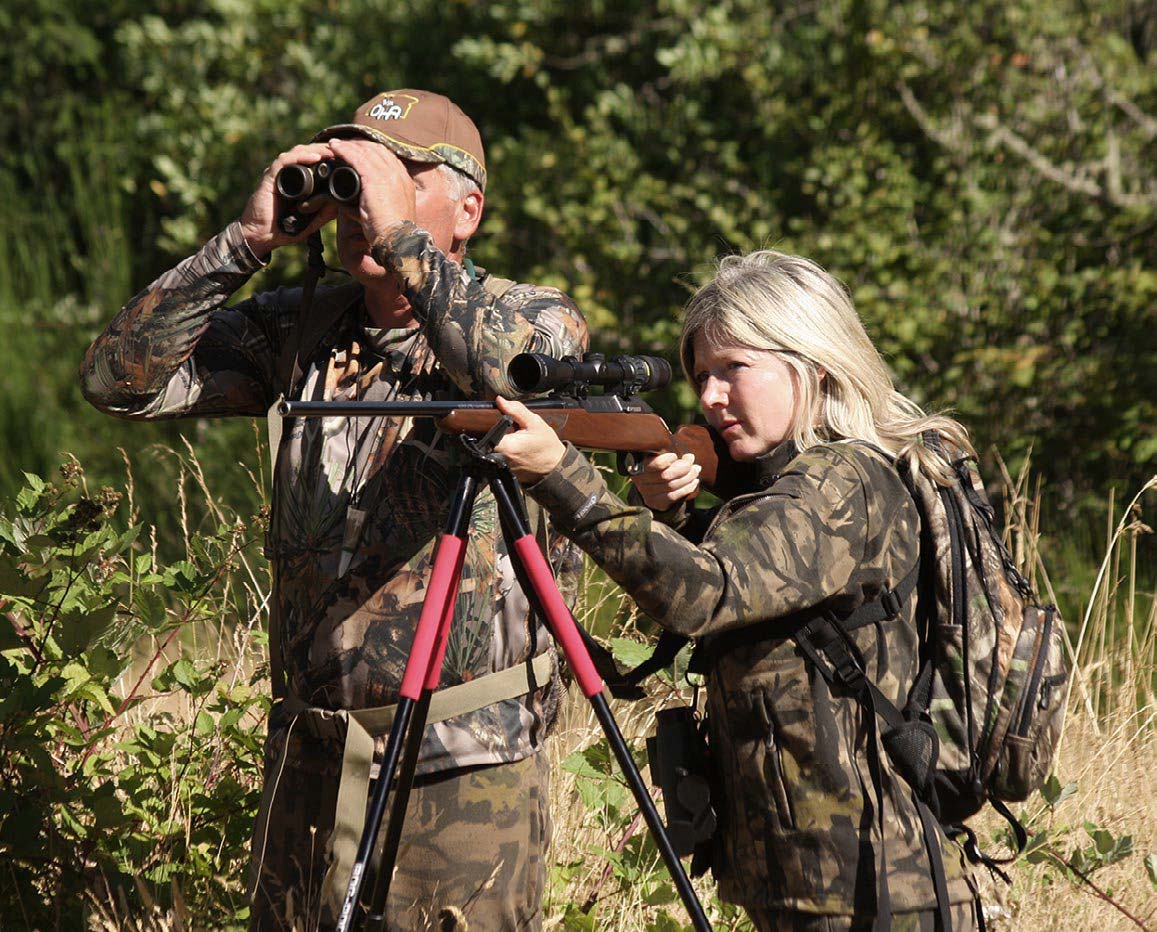
The Chance Comes
Then, in between some cows, an ivory tine shined. No words were necessary. Emily
settled into her Trijicon scope. For more than three minutes, we could see the bull’s rack 70 yards in front of us, but it was too brushy to thread a bullet through. Then, two cows situated to the right of the bull quit feeding and started walking on the trail. Emily slipped her safety off, anticipating that the bull would follow. It did.
The pie-plate-size opening in the brush was all that Emily needed, and she made a perfect shot behind the shoulder. The herd crashed through the bog and heavy brush, and the bull disappeared in one lunge, swallowed in brush. The bullet found both lungs. The bull didn’t go 30 yards.
Approaching that downed giant was a moment I’ll never forget. Between Gary and I, we’d seen a lot of big Roosie’s over the years, but this was the biggest-bodied bull we’d ever seen. The giant bull was pushing the 1,000-pound mark. Mature Roosie bulls are massive.
This early season Roosevelt hunt was one for the ladies, one nobody will forget. Both experiences were truly special moments in the Roosevelt woods, and we all knew it.
In a land choked with brush and dense timber, one where elk are free to come and go as they please, there are never any guarantees when it comes to hunting Roosevelts. In the Coast Range of the Pacific Northwest, mature bulls often live their entire lives without being seen by hunters.
Sometimes, however, everything comes together and being in the right place at the right time pays off. Tiffany and Emily couldn’t have been more thrilled with the outcomes, and their husbands, families and friends could not have been prouder of them.
Note: For signed copies of Scott Haugen’s popular line of hunting books and Tiffany’s best-selling cookbooks, visit scotthaugen.com. You can also follow Scott’s adventures on Instagram.
Per our affiliate disclosure, we may earn revenue from the products available on this page.

